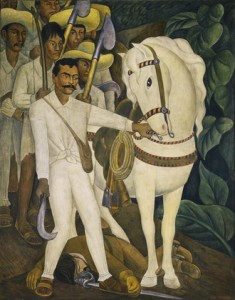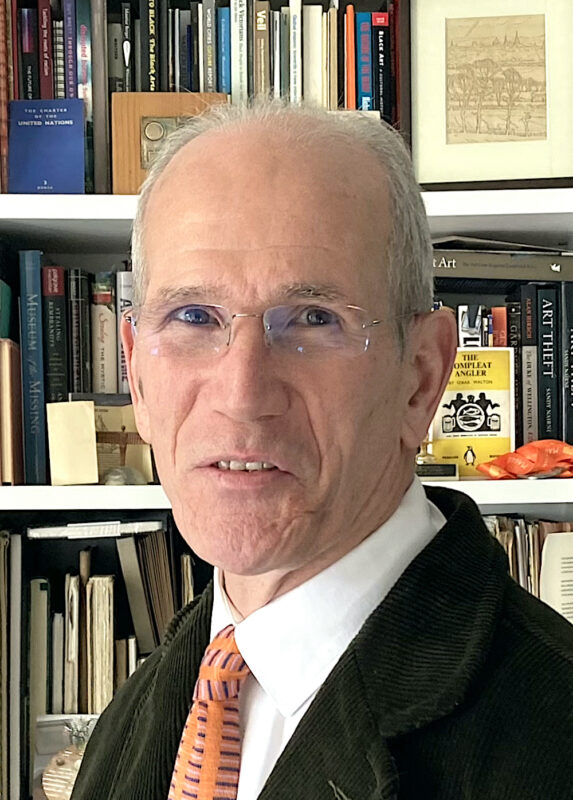
Independent charity The Art Fund today announces that it has given a rare edition of the iconic lithograph, Emiliano Zapata and his Horse by Mexican artist Diego Rivera, to the British Museum along with sixteen posters produced by other revolutionary Mexican artists between 1936 and 1953.
The Diego Rivera print and a large selection of the posters are featured in the upcoming exhibition, Revolution on Paper: Mexican Prints from 1910 – 1960 at the British Museum . The Art Fund gave a 100% grant of £25,061 to acquire Rivera’s Emiliano Zapata and his Horse. The sixteen posters were presented through The Art Fund to the British Museum by the Aldama Foundation, a charitable foundation set up by two philanthropists who have spent extended time in Mexico . Until now, modern Mexican art has been underrepresented in UK collections, and the acquisition of these prints marks a significant step in addressing this gap.
Emiliano Zapata and his Horse is the most famous Mexican print of the 20th century. The iconic lithograph features the Mexican guerrilla leader Emiliano Zapata (1879 – 1919), flanked by a horse and peasant fighters. Rivera created Zapata in 1932 on commission from the Weyhe Gallery in New York . Printed in an edition of 100, this particular impression was bought from the granddaughter of the publisher. It has never been re-sold or framed and is near to original condition.
Comprising sixteen posters created in Mexico during the first half of the 20th century, the Aldama Foundation gift presented through The Art Fund includes works by several important Mexican printmakers including Isidoro Ocampo, Alfredo Zalce and Leopoldo Méndez
The two collectors who established the Aldama Foundation have acquired a wide range of prints and illustrated books during their time in Mexico . This collection of sixteen posters was presented via The Art Fund to the British Museum as a way of ensuring their unity. The posters have instant visual appeal and represent a relatively under-publicised area of Mexican printmaking: recent publications have tended to focus on single sheet ‘art’ prints rather than posters. The Art Fund gift therefore makes up one of the most original areas of the Revolution on Paper exhibition.
This is the first time that these particular editions of the posters and lithograph have gone on public display.
Andrew Macdonald, Acting Director of The Art Fund, said: “These eye-catching posters shed light on a turbulent and vibrant period in Mexico ’s history. Thanks to the generosity of the Aldama Foundation, The Art Fund has been able to ensure that these outstanding prints will be kept together in a public collection for posterity, and we are in addition delighted to have been able to secure Diego Rivera’s iconic Zapata to go with them.”
Antony Griffiths, Keeper of Prints at the British Museum , said: “The British Museum is delighted to be able to add to its collection the most famous print ever made in Mexico , which can now be put alongside the masterpieces of other schools in the British national collection.”
The British Museum ’s Revolution on Paper exhibition will be the first in Europe focusing on the great age of Mexican printmaking in the first half of the twentieth century. The exhibition runs from 22 October – 5 April 2010. Admission free.
Mexican printmaking flourished during the first half of the twentieth century, following the country’s first socialist revolution which took place between 1910 and 1920. The strong left-wing government which emerged laid great stress on art as a way of promoting values of the revolution. This led to a pioneering programme to cover the walls of public buildings with vast murals, and later to setting up print workshops to produce works for mass distribution and education.
Diego Rivera (1886 – 1957) is the best known Mexican artist of the 20th century. Born in Mexico City , he studied painting in his home country before moving to Europe in 1907, where he took up cubism and exhibited in Paris and Madrid . He married the artist Frida Kahlo in 1929. During the 1930s and 40s he worked in the United States and Mexico , creating paintings, prints and large-scale murals. Throughout his career Rivera made only fourteen prints, most of which were lithographs published by the Weyhe Gallery, New York, and a single linoleum cut he made in Mexico City in 1938.








